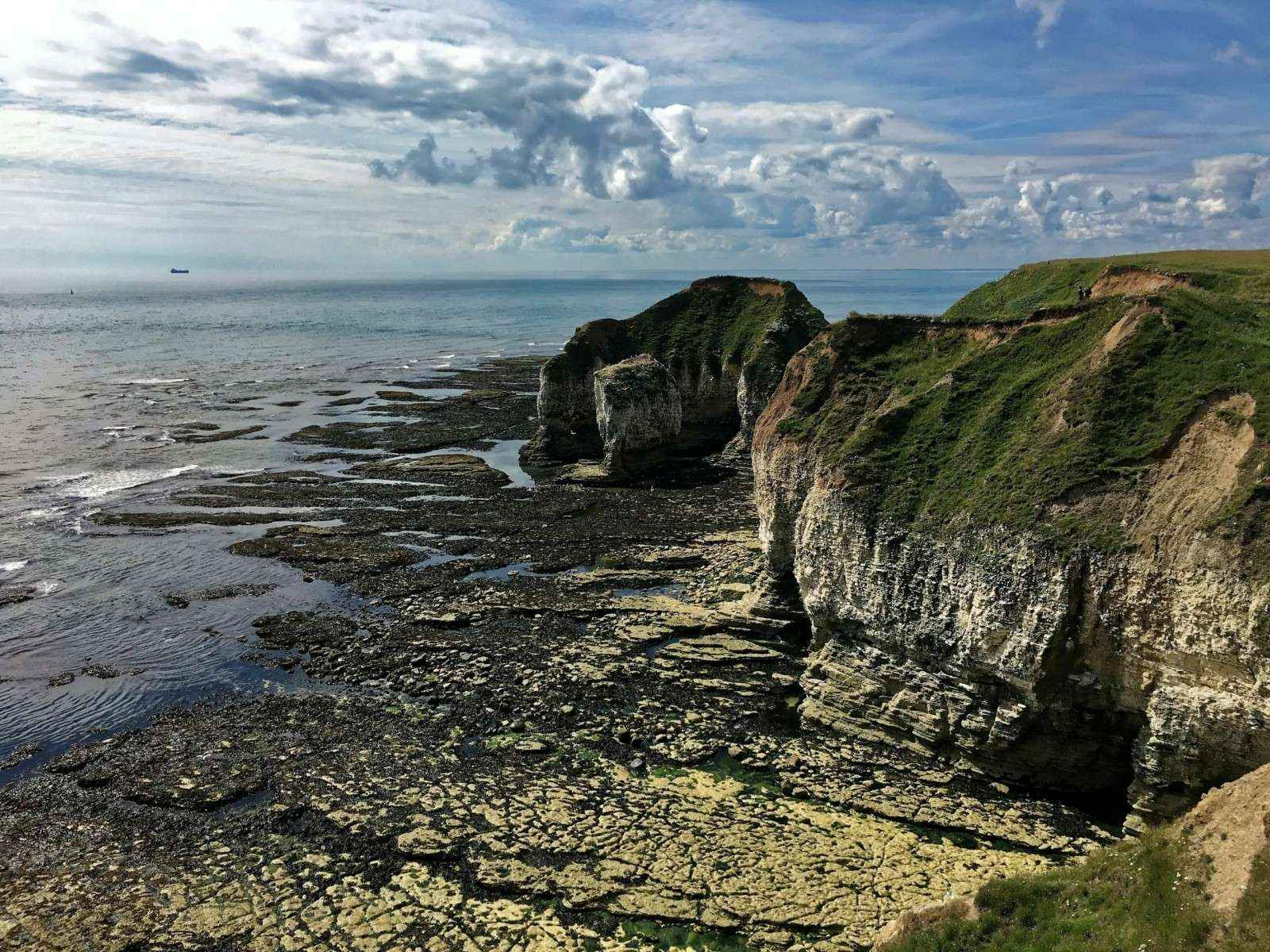
Erosional landforms are some of the most fascinating geographical features found on our planet. Shaped by the relentless forces of nature over millions of years, these landforms bear testimony to the power and beauty of erosion. From the towering cliffs of the Grand Canyon to the dramatic fjords of Norway, erosional landforms captivate the imagination and provide a glimpse into the Earth’s dynamic history.
In this article, we will explore 20 captivating facts about erosional landforms that will leave you in awe of the natural wonders that surround us. From the processes that shape these formations to the breathtaking landscapes they create, we will delve into the diverse range of erosional landforms found around the globe. So get ready to embark on a journey of discovery as we uncover the remarkable world of erosional landforms.
Key Takeaways:
- Erosional landforms, like the Grand Canyon, are shaped by wind, water, and ice over millions of years, showcasing the Earth’s incredible patience and power of erosion.
- From stunning arches to majestic waterfalls, erosional landforms offer breathtaking views and provide diverse habitats for plants and animals, constantly evolving and reshaping the Earth’s landscapes.
Erosional Landforms are shaped by the forces of nature.
Erosional landforms are fascinating geological features that have been sculpted over millions of years by the relentless forces of nature.
Erosional Landforms can be found all over the world.
From towering cliffs and majestic canyons to rugged coastlines and stunning arches, erosional landforms can be found in every corner of the globe.
Erosional Landforms are created by the action of wind, water, and ice.
The powerful forces of wind, water, and ice contribute to the formation of erosional landforms, shaping the Earth’s surface in unique and mesmerizing ways.
Erosional Landforms come in various shapes and sizes.
From dramatic valleys carved by glaciers to intricate sandstone formations eroded by wind, erosional landforms showcase an incredible variety of shapes and sizes.
Erosional Landforms display the power of erosion.
The gradual wearing away of rocks and soil by natural elements highlights the immense power of erosion in shaping the Earth’s landforms.
Erosional Landforms can take millions of years to form.
The transformation of landscapes into stunning erosional landforms is a slow and gradual process that can span millions of years, illustrating the patience of nature.
Erosional Landforms provide clues about Earth’s history.
Studying erosional landforms can unlock valuable information about the Earth’s geological history and the changes it has undergone over time.
Erosional Landforms are home to diverse ecosystems.
Erosional landforms provide habitats for a wide range of plants, animals, and microorganisms, resulting in unique and biodiverse ecosystems.
Erosional Landforms can offer breathtaking views.
Whether it’s witnessing the grandeur of the Grand Canyon or marveling at the stunning rock formations of the Giant’s Causeway, erosional landforms never fail to leave us in awe.
Erosional Landforms are constantly changing.
The dynamic nature of erosional landforms means that they are continuously evolving and being reshaped by the ongoing forces of erosion.
Erosional Landforms can be found in coastal areas.
Coastlines are prime locations for the formation of erosional landforms, with wave action and tidal forces shaping cliffs, sea stacks, and other fascinating features.
Erosional Landforms can be found in desert landscapes.
The relentless winds of the desert create unique erosional landforms such as sand dunes, mesas, and buttes, adding to the mystique of these arid regions.
Erosional Landforms can be found in glacial regions.
Giant glaciers have the power to carve out breathtaking valleys, fjords, and cirques, leaving behind stunning erosional landforms as evidence of their presence.
Erosional Landforms can be found in mountainous areas.
The sculpting power of ice and water has shaped mountainous regions into fascinating erosional landforms such as rugged peaks, deep gorges, and U-shaped valleys.
Erosional Landforms can create natural bridges.
The erosion of rock bridges can create natural arches and bridges, such as the famous Delicate Arch in Arches National Park, showcasing the artistic precision of nature.
Erosional Landforms can form caves and caverns.
The relentless erosion of limestone and other soluble rocks can create intricate cave systems and caverns that house stunning underground formations.
Erosional Landforms can result in waterfalls.
The erosive power of rivers and streams can carve out steep cliffs and create majestic waterfalls, adding both beauty and drama to the landscape.
Erosional Landforms can shape the coastline.
The constant pounding of waves against cliffs and shorelines contributes to the erosion and formation of captivating coastal landforms, such as sea caves and sea arches.
Erosional Landforms can be found in river valleys.
River valleys are often the result of erosion, with rivers slowly carving and shaping the land over time, resulting in stunning valleys and meandering channels.
Erosional Landforms can lead to the formation of canyons.
The relentless erosion of rock layers by rivers can create awe-inspiring canyons, such as the iconic Grand Canyon in the United States.
Conclusion
In conclusion, erosional landforms are not only visually stunning but also fascinating geological formations that shape our planet’s surface. From towering cliffs to majestic canyons, these landforms serve as a testament to the powerful forces of erosion.Through the relentless actions of wind, water, ice, and gravity, these landforms are sculpted over thousands or even millions of years. Each erosional landform tells a unique story of the Earth’s ever-changing landscape.Whether it’s the breathtaking beauty of the Grand Canyon, the awe-inspiring scale of Mount Everest, or the mesmerizing formations of the Giant’s Causeway, erosional landforms continue to captivate us with their sheer grandeur.Exploring and understanding erosional landforms not only enriches our knowledge of geography but also provides a deeper appreciation for the dynamic nature of our planet. So, the next time you encounter a captivating erosional landform, take a moment to marvel at its beauty and reflect on the incredible forces that shaped it.
FAQs
1. What causes erosional landforms?
The main agents of erosion that cause landforms include water, wind, ice, and gravity. These forces gradually wear away rock and soil, shaping the land over time.
2. How long does it take for erosional landforms to form?
The formation of erosional landforms is a slow process that can take thousands or even millions of years. Factors such as the type of rock, climate, and the intensity of the erosional force determine the time it takes for landforms to develop.
3. What are some famous erosional landforms?
Examples of famous erosional landforms include the Grand Canyon in the United States, the Great Barrier Reef in Australia, the Cliffs of Moher in Ireland, and the Victoria Falls in Africa.
4. How do erosional landforms contribute to the landscape?
Erosional landforms contribute to the overall landscape by adding diversity and creating unique features. They shape valleys, create cliffs, expose layers of rocks, and form stunning natural landmarks.
5. Can erosional landforms change over time?
Yes, erosional landforms are dynamic and can change over time due to various factors such as climate change, tectonic activity, and ongoing erosion processes. These changes can occur gradually or through sudden events like landslides or earthquakes.
Erosional landforms showcase nature's incredible sculpting abilities, from majestic arches to deep, winding gullies. Cliffs, another testament to erosion's power, stand tall and unyielding against relentless weathering forces. Uncover more captivating facts about these awe-inspiring geological wonders by exploring our articles on arches, gullies, and cliffs. Each piece delves into the unique characteristics, formation processes, and stunning examples found worldwide. Embark on a journey through time and terrain as you discover the secrets behind some of Earth's most remarkable erosional masterpieces.
Was this page helpful?
Our commitment to delivering trustworthy and engaging content is at the heart of what we do. Each fact on our site is contributed by real users like you, bringing a wealth of diverse insights and information. To ensure the highest standards of accuracy and reliability, our dedicated editors meticulously review each submission. This process guarantees that the facts we share are not only fascinating but also credible. Trust in our commitment to quality and authenticity as you explore and learn with us.


